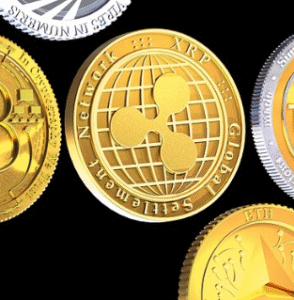$DXY $BTC $USDT
#LaborMarket #USJobs #Stablecoins #USDT #BTC #FederalReserve #EconomicGrowth #Inflation #CryptoNews #BondYields #StablecoinRegulation #USEconomy
The U.S. labor market continues to exhibit remarkable resilience, defying expectations of a significant slowdown despite rising interest rates and other economic challenges. Recent reports show that job creation remains robust, with payrolls expanding steadily and unemployment rates hovering near record lows. This persistence underscores the strength of the domestic economy, despite efforts by the Federal Reserve to cool inflation through aggressive rate hikes. A tighter labor market has, in turn, fueled wage growth, which contributes to consumer spending—an essential component of GDP. However, this dynamic complicates the Fed’s balancing act, as elevated wages can stoke inflation, necessitating potentially further monetary tightening. Equity markets have responded mixedly; strong employment data supports consumer-facing sectors, while higher interest rate expectations weigh on growth stocks.
Labor market strength also indirectly impacts the cryptocurrency space, particularly stablecoins like $USDT. Stablecoins are increasingly used as a form of liquidity in volatile markets, and a strong labor market reinforces consumer financial confidence, often translating into more substantial retail participation in crypto investments. Despite ongoing regulatory scrutiny, stablecoins remain integral to the crypto ecosystem, facilitating trades and preserving value in turbulent markets. The Federal Reserve’s hawkish stance is expected to maintain pressure on the U.S. Dollar Index ($DXY), boosting its appeal as a global reserve currency, potentially dampening interest in decentralized alternatives like $BTC in the short term. However, the crypto market’s reaction to regulatory developments will remain a crucial aspect to monitor.
Stablecoins are also the subject of rising debate among regulators who view their market influence with caution. The U.S. labor market’s resilience, coupled with stablecoin adoption, highlights a financial ecosystem increasingly influenced by both traditional and decentralized assets. Questions regarding the systemic impact of stablecoins persist; for instance, would a disruption in their market destabilize broader financial systems, or are they insulated enough to manage internal shocks? Regulators are keen to impose transparency in stablecoin reserves and ensure adequate liquidity backing these digital assets. This mirrors the Federal Reserve’s macroeconomic goals—containing volatility and maintaining stability—though skepticism remains about how successfully these two worlds can coexist.
Overall, the sustained strength of the labor market drives economic confidence, but it complicates policymaking by prolonging inflationary pressures. This subsequently affects both traditional and digital finance sectors. While $USDT and similar stablecoins benefit from heightened liquidity during stable economic conditions, tightening monetary policy and unpredictability in policy frameworks present risks. As the Federal Reserve wrestles with inflation control, its decisions will ripple across markets—from bond yields to digital assets. Investors and policymakers alike will need to navigate this evolving landscape with vigilance, as the interplay between traditional economic indicators and emerging technologies continues to redefine global finance.






Comments are closed.